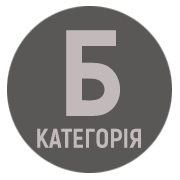Peculiarities of teaching a foreign language in distance learning conditions
DOI:
https://doi.org/10.32782/2617-3921.2023.23.255-263Keywords:
teaching methods, information and communication technologies, distance educational technologies, Quizlet, Kahoot, WordwallAbstract
The article is a study of the peculiarities of teaching a foreign language in the conditions of distance learning. It emphasizes that proficient knowledge of foreign languages expands opportunities and helps to fully integrate into the global community, becoming a necessary condition for a successful career. Distance learning is an effective means of successfully mastering foreign languages. Currently, the issues of methodological justification for the use of Internet resources in the process of distance learning, as well as their impact on effective interaction between teachers and students, as well as among students themselves, have become extremely relevant. Therefore, the aim of the article is to highlight the current issues of implementing interactive learning in foreign language lessons and the use of interactive platforms such as Quizlet, Kahoot, and Wordwall. Taking into account the methodology and specifics of distance learning of a foreign language, five key advantages of using distance educational technologies compared to traditional methods of language learning have been identified. Summarizing the domestic experience of educators and researchers, the following frequently mentioned internet services used during distance learning can be highlighted: Quizlet, Kahoot, and Wordwall. It is noted that effective feedback provided by interactive platforms activates the learning process, which ultimately is the goal of applying any modern educational technologies. It is emphasized that Quizlet, Kahoot, and Wordwall services incorporate gaming elements within the educational system, but the system itself does not turn into a game, and the educational content remains unchanged. The configuration and working principles of these interactive platforms are thoroughly examined. It is noted that the rational and comprehensive use of gaming elements helps to focus students' attention on solving assigned tasks to achieve educational goals and reduces psychological discomfort during the learning process. It is highlighted that with the aid of Internet resources, modern teachers can diversify the learning process, enhance its effectiveness, and optimize the assessment of acquired knowledge.
References
Близнюк Л. М., Козак А. В., Шостак У. В. Вивчення іноземної мови в часи пандемії: криза чи шанс. Інноваційна педагогика. 2021. Вип. 38. С. 102–105.
Гладун М. А., Сабліна М. А. Сучасні онлайн інструменти інтерактивного навчання як технологія співробітництва. Open Educational E-environment of modern university. 2018. № 4. С. 33–43.
Карпушина М., Шумило І. Використання освітніх інтернет-платформ у навчанні іноземної мови. Вісник Національного університету «Львівська політехніка». Серія: Інформатизація вищого навчального закладу. 2018. № 903. С. 81–87.
Коваленко А. Дистанційне навчання іноземної мови за умов пандемії: специфіка форм і методів роботи. Актуальнi питання гуманiтарних наук. 2021. Вип 35. Т. 3. С. 250–255.
Кухаренко В. М., Рибалко О. В., Сиротенко Н. Г. Дистанційне навчання: умови застосування. Дистанційний курс: навчальний посібник. Харків : НТУ «ХПІ», «Торсінг», 2002. 320 с.
Тарасюк А. М. Психолого-педагогічні особливості дистанційного навчання іноземної мови у ВНЗ. Інноваційна педагогіка. 2021. Вип. 40. С. 247–251.
Kahoot. URL: https: // kahoot. com / what-is-kahoot/ (дата звернення 23.05.2023).
Quizlet. URL: https: // quizlet. com (дата звернення 23.05.2023).
Wordwall. URL: https: //wordwall.net/uk (дата звернення 23.05.2023).



